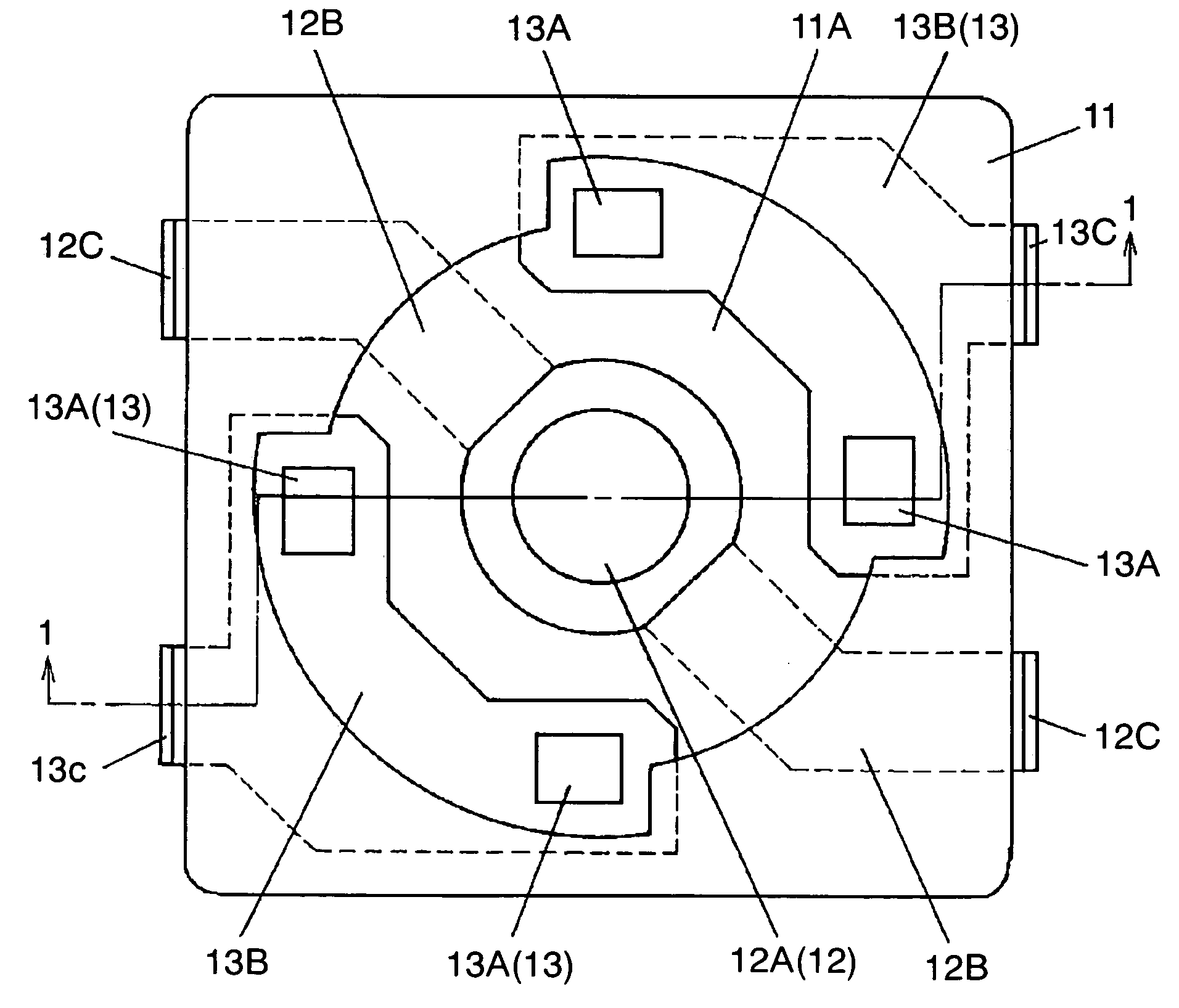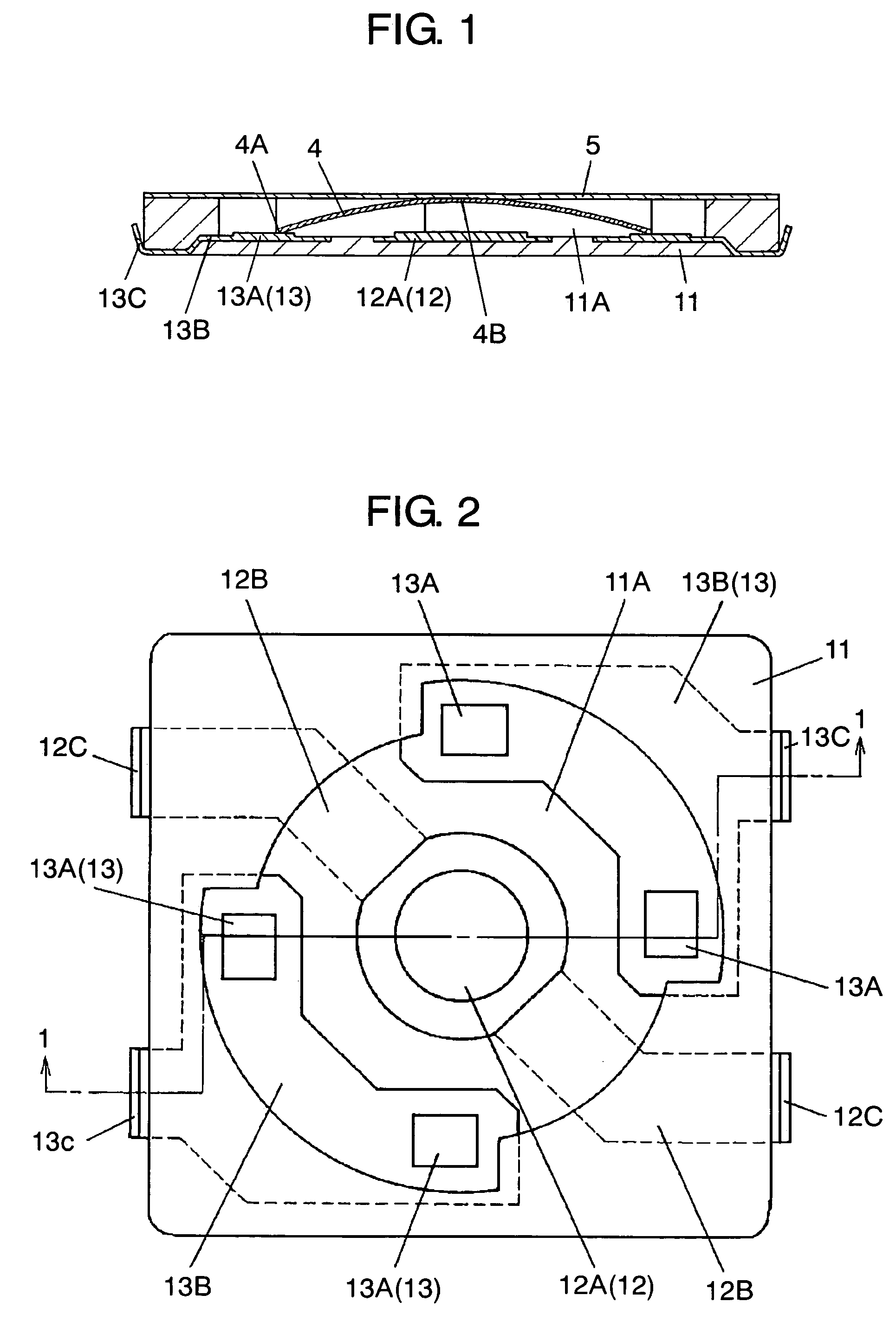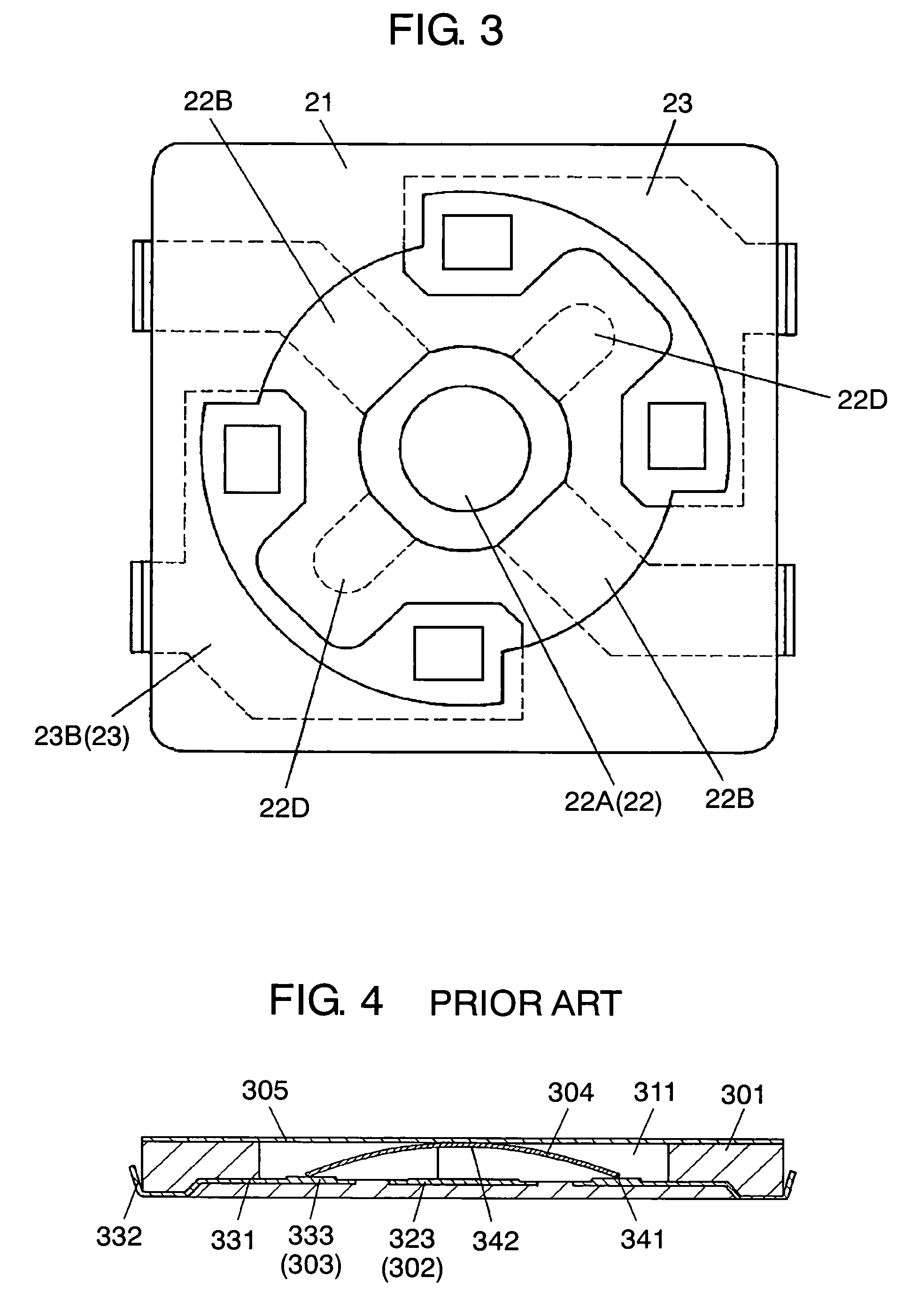Push-on switch
a push-on switch and switch technology, applied in the direction of snap-action arrangements, contact surfaces, contact shape/structure, etc., can solve the problems of heat adversely affecting the switch base, and achieve the effect of reducing the possibility of switch base deformation and stable performan
- Summary
- Abstract
- Description
- Claims
- Application Information
AI Technical Summary
Benefits of technology
Problems solved by technology
Method used
Image
Examples
first embodiment
[0036]Referring now to FIG. 1 and FIG. 2, description is provided more concretely of a structure of the first embodiment according to the present invention.
[0037]FIG. 1 is a cross sectional view of a push-on switch according to the first embodiment of this invention, and FIG. 2 is a plan view of a switch base of the push-on switch shown in FIG. 1. The cross sectional view of FIG. 1 depicts the structure in which a complete assembly is sectioned along the line 1—1 shown in FIG. 2.
[0038]In switch base 11 made of an insulation resin shown in FIG. 1, center stationary contact 12 representing a first stationary contact is secured to a bottom surface in the center of open-top recess 11A, and outer stationary contacts 13 representing second stationary contacts are secured to the bottom surface at positions along an outer brim of recess 11A and confronting each other across center stationary contact 12, all by means of insertion molding.
[0039]Center contact point 12A of center stationary co...
second embodiment
[0048]FIG. 3 is a plan view of a switch base according to the second exemplary embodiment of the present invention. Description will be provided of a push-on switch of this embodiment shown in FIG. 3 with the priority given to different parts from those of the first exemplary embodiment shown in FIG. 1 and FIG. 2.
[0049]That is, switch base 21 illustrated in FIG. 3 is provided, in addition to what are shown in the first exemplary embodiment of FIG. 2, with second lead paths 22D secured into embedment to a recess in switch base 21 in a manner to extend in directions along a diagonal line toward respective areas where outer stationary contacts 23 defining the second stationary contacts are secured from center contact point 22A of center stationary contact 22 defining the first stationary contact secured by means of insertion molding.
[0050]While the individual second lead paths 22D extend toward corner areas of L-shaped outer lead paths 23B, they are arranged with a predetermined distan...
PUM
 Login to View More
Login to View More Abstract
Description
Claims
Application Information
 Login to View More
Login to View More - R&D
- Intellectual Property
- Life Sciences
- Materials
- Tech Scout
- Unparalleled Data Quality
- Higher Quality Content
- 60% Fewer Hallucinations
Browse by: Latest US Patents, China's latest patents, Technical Efficacy Thesaurus, Application Domain, Technology Topic, Popular Technical Reports.
© 2025 PatSnap. All rights reserved.Legal|Privacy policy|Modern Slavery Act Transparency Statement|Sitemap|About US| Contact US: help@patsnap.com



